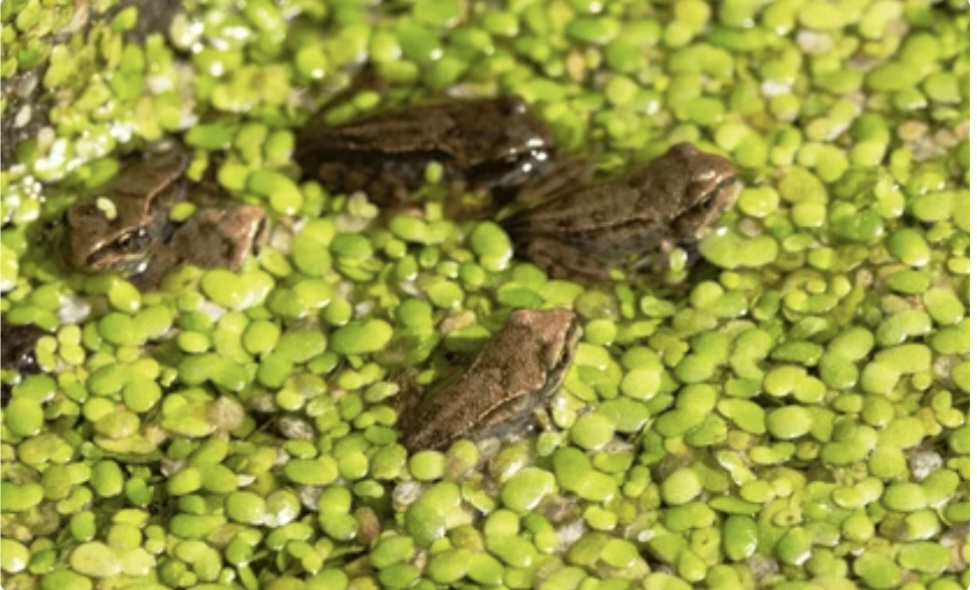INTRODUCTION
The Metamorphosis stages in lifecycle of frogs is a captivating process that showcases nature’s brilliance in transforming a water-dwelling creature into a terrestrial marvel. From the initial stages of egg-laying to the emergence of a fully formed adult frog, this intricate journey encompasses various physiological and behavioral adaptations. In this exploration, we delve into the metamorphosis of frogs, unraveling the complexities of each stage and the evolutionary significance behind this remarkable transformation.
METAMORPHOSIS STAGES
EGG STAGE
The metamorphosis of frogs begins with the egg stage, where female frogs lay clusters of eggs in aquatic environments such as ponds, lakes, or streams. These eggs are usually encased in a gel-like substance to protect them from predators and provide moisture essential for development. The number of eggs laid can vary significantly depending on the species, ranging from a few dozen to thousands. This stage marks the commencement of a journey filled with transformation and adaptation.
EMBRYO STAGE
As the eggs are fertilized, they undergo embryonic development, culminating in the formation of tadpoles. Inside the protective egg casing, intricate biological processes unfold, shaping the foundation for the tadpole’s future development. The embryo absorbs nutrients from the surrounding environment, fueling its growth and cellular differentiation. This stage is crucial for establishing the basic anatomical structures necessary for the tadpole’s survival.
TADPOLE STAGE
Upon hatching from the eggs, tadpoles emerge into the aquatic environment as larvae equipped with specialised adaptations for underwater life. These aquatic creatures exhibit elongated bodies, fin-like tails, and external gills for efficient respiration in water. Tadpoles primarily feed on algae, detritus, and other organic matter found in their aquatic habitat, fueling their rapid growth and development. Throughout this stage, tadpoles undergo extensive physiological changes, preparing them for the eventual transition to terrestrial life.
METAMORPHOSIS
The most remarkable phase of the frog’s life cycle is metamorphosis, a process characterised by profound anatomical and physiological transformations. Triggered by a combination of environmental cues and hormonal signals, metamorphosis marks the transition from aquatic tadpole to terrestrial frog. The metamorphic process unfolds in several distinct stages, each contributing to the gradual reshaping of the tadpole’s body.
- Resorption of the Tail: One of the initial changes during metamorphosis is the resorption of the tadpole’s tail. This process involves the breakdown and reabsorption of tail tissues, resulting in the reduction of the tail’s size. As the tail diminishes, the frog’s hind limbs become more prominent, signaling the onset of its transition to a land-dwelling creature.
- Development of Limbs: Concomitant with the resorption of the tail is the development of limbs, a hallmark feature of frog metamorphosis. Initially, the hind limbs emerge as small buds, gradually elongating and differentiating into fully formed legs. Subsequently, the forelimbs undergo a similar process, emerging as buds before evolving into functional appendages. The development of limbs is a critical adaptation for terrestrial locomotion, enabling frogs to navigate diverse habitats with agility and efficiency.
- Formation of Lungs: As the tadpole prepares for its transition to terrestrial life, it undergoes significant changes in its respiratory system. While tadpoles rely on external gills for oxygen exchange in water, adult frogs utilize lungs for respiration in the air. During metamorphosis, the tadpole’s gills gradually regress, and the lungs undergo rapid development. This adaptation allows frogs to breathe air efficiently, facilitating their survival in terrestrial environments.
- Changes in Diet and Habitat: Alongside anatomical transformations, metamorphosis also entails behavioural changes that reflect the frog’s shift from an aquatic to a terrestrial lifestyle. As the tadpole undergoes metamorphosis, its diet transitions from primarily herbivorous to carnivorous, reflecting the dietary preferences of adult frogs. Additionally, the frog’s habitat preferences change, with terrestrial environments becoming more suitable for foraging, mating, and sheltering.
JUVENILE STAGE

Following the completion of metamorphosis, the frog enters the juvenile stage, where it embarks on its journey as a newly transformed terrestrial creature. Juvenile frogs, known as froglets, exhibit a blend of characteristics from both tadpoles and adult frogs, reflecting their transitional phase of development. While they possess fully formed limbs and lungs for terrestrial life, they may retain vestigial features from their aquatic larval stage, such as remnants of the tail or external gills.
During the juvenile stage, froglets undergo further growth and maturation, gradually assuming the physical characteristics and behaviors of adult frogs. They explore their terrestrial habitats, honing their hunting skills, and establishing territories for feeding and breeding. This stage represents a crucial period of adaptation and acclimatization, as froglets navigate the challenges of survival in their new environment.
ADULT STAGE

The culmination of the metamorphic journey is the attainment of adulthood, where the frog emerges as a fully formed and sexually mature organism. Adult frogs exhibit a diverse array of adaptations tailored to their specific ecological niche, ranging from specialized mating behaviors to camouflage mechanisms for evading predators. They play vital roles in ecosystem dynamics, serving as both predators and prey and contributing to nutrient cycling and habitat maintenance.
Throughout their adult lives, frogs engage in various behaviors essential for survival and reproduction. They employ sophisticated vocalizations to attract mates during the breeding season, utilizing distinctive calls that are species-specific. Mating rituals often involve elaborate courtship displays, where males compete for the attention of females through visual and auditory cues.
CONCLUSION
The metamorphosis of frogs is a testament to the remarkable adaptability and resilience of these amphibious creatures. From the humble beginnings as aquatic tadpoles to the graceful transition into terrestrial adulthood, frogs undergo a series of intricate changes that shape their destiny. This journey embodies the intricate interplay between genetics, development, and environmental factors, highlighting the evolutionary strategies employed by frogs to thrive in diverse habitats. As guardians of freshwater ecosystems and indicators of environmental health, frogs serve as ambassadors for conservation efforts, reminding us of the interconnectedness of all living organisms on our planet.
Discover more from ZOOLOGYTALKS
Subscribe to get the latest posts sent to your email.




Pingback: CELL CYCLE CONTROL IN Xenopus | ZOOLOGYTALKS | 11/11/2024